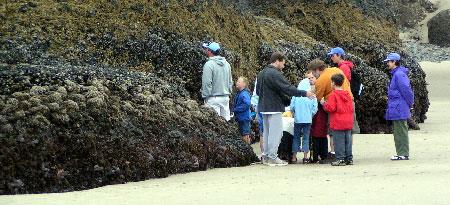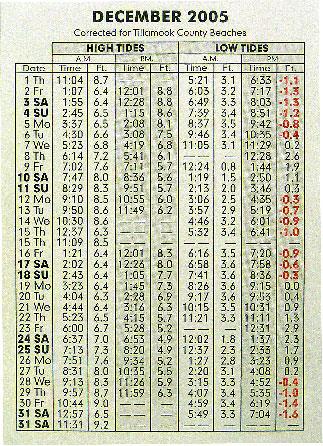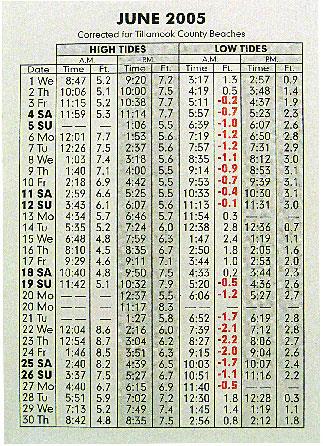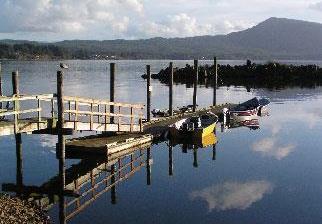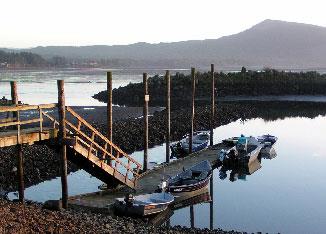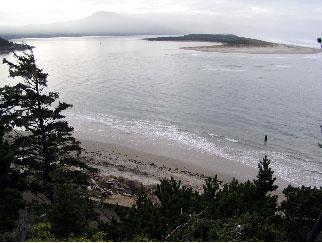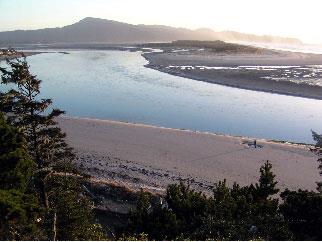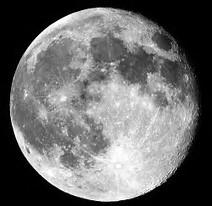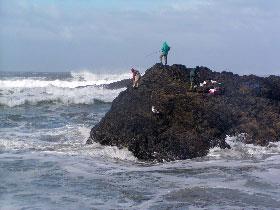Someone is bound to ask, “If there is only gravity acting, why doesn't the Moon fall into the Earth?” That's a good question. The explanation is much the same as the explanation of how the International Space Station (ISS) avoids falling to Earth. Actually both the ISS and the Moon are constantly falling toward the Earth, but the forward motion of each just balances the falling so that both Moon and ISS stay in orbit. When astronauts want to return to Earth, how do they do it? They slow down their return ship, and it simply falls back to Earth. No one wants the Moon to fall to Earth, so it's a good thing it isn't slowing down!
Scientists call the high tide below the Moon the “direct tide” and the high tide on the side opposite the Moon, the “indirect tide”. Low tides are on the sides of the Earth at right angles to the high tides. As the Earth rotates on its axis, any point on Earth, including Netarts Bay, passes through each of these tide bulges. In a nutshell, that is why there are low and high tides.
Why are the tides later on successive days? Since we know that the earth rotates on its axis every 24 hours, we might expect to see both tidal bulges (high tides) pass us in that 24-hour period. If we were standing on a beach, we would be prepared to see two high tides, each exactly 12 hours apart. But when we look at our tide booklet, we find that the period between high tides on successive days is longer than 24 hours. This is because the earth is not only turning on its own axis, but the moon and earth are also rotating on their common barycenter, which means that the moon is not at the same location after 24 hours, but has moved 12.2 degrees to the east, and the earth must rotate another 50 minutes for the moon to come overhead again. This period of 24 hours and 50 minutes is called the lunar day, and it is the main reason for the times of the tides on successive days. However, if you carefully examine the times of AM tides from day to day and do the math, you will see that they are not necessarily 12 hours and 50 minutes apart. The period may be somewhat longer or shorter. There are other factors, some of which are discussed below, that influence these times.
When the Moon, Earth, and Sun are positioned in a straight line at new or full Moon, the tide producing forces of the Sun and Moon are added together giving extra high tides and extra low tides called “spring tides.” These are the best tides for beach combing, clamming, or visiting tidepools. During the Moon’s first and last quarters the Sun and Moon act at right angles to each other, and the result is a much reduced tidal range called a “neap tide.”
The three bodies vary in distance from one another because of the shape of their orbits. The orbit of the moon, for example, is an approximate ellipse. During its sidereal month of 27.32 solar days, it travels closest to the earth at its perigee and farthest at its apogee, a difference of about 50,000 km (31,000 miles). These changing distances have an affect on the range of tides, elevating tides at perigee and lowering tides at apogee. Likewise the orbit of the earth around the sun is not quite circular. All these changing distances due to orbits, with their gravitational augmentations and oppositions, begins to complicate the idealized picture of tides we began with.

